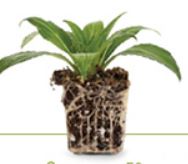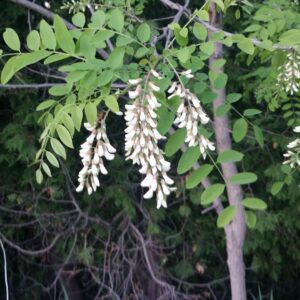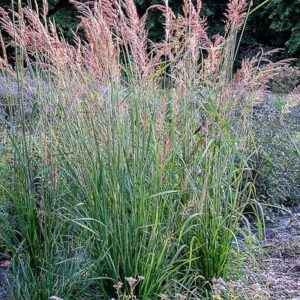$8.00
Asclepias tuberosa, Butterfly Weed, Organically Grown Native Perennial Plugs, Native Wildflowers, Native Pollinator Support Plants
There is a required minimum purchase of 5 individual plant plugs for this species. There are 50 individual plant plugs of this species in a tray.
5 or more $8.00 each
25 or more $3.75 each
50 or more $1.80 each
300 or more $1.70 each
1,000 or more $1.60 each
For Shipping, Planting and additional FAQ’s please see “About our organically grown native plug trays “.
See all available Native Perennial Grasses & Organically Grown Plug Trays
Order Minimum
There is a minimum order total of $150.00.
before tax (VA residents only) and shipping.
There are NO EXCEPTIONS.
Description
Asclepias tuberosa, Butterfly Weed, Organically Grown Native Perennial Plugs, Native Wildflowers, Native Pollinator Support Plants
Attractive Flowers
Beneficial to Insects:
host for monarch butterflies Butterflies:
Erosion Control:
FACU – Usually occur in non-wetlands, but may occur in wetlands:
Flood Tolerant:
Full – Part Sun (6+ hours of sun):
Herbaceous plant:
High Wildlife Value:
Hummingbirds:
Loamy Soil- mostly silt, sand, some clay:
Moist Soil:
Native to Coastal Regions:
Native To Mountain Regions:
Native to Piedmont Regions:
Perennial:
Pollinator support:
Small Mammals:
UPL- Almost never occur in wetlands:
Wildflower:
Full Sun:
Botanic Native Name (s): Asclepias tuberosa
Common Native Name(s): Butterfly milkweed
Mature height :2-3′
Mature spread:3-4ft
Flower Color: ORANGE
Bloom Time: May-July
Fruit: Pod
Sun Exposure: Full Sun Part Sun
Soil moisture: Average Moist
Soil Ph:5-8
Soil Type: Clay Soil- High clay content, fine texture
Loamy Soil- mostly silt, sand, some clay
Asclepias tuberosa Native Habitat: Roadsides along ditches, streambanks, meadows, prairies
Notes: Asclepias tuberosa is a Major food and larva source for monarch butteflies, can tolerate drought, interesting seed pod
Fragrant Erosion Control Flood Tolerant Drought tolerant Deer Resistant
High Wildlife Value: Beneficial Insects Butterflies Hummingbirds
Native to Coastal Regions
Native To Mountain Regions
Native to Piedmont Regions
Native Perennial/Wildflower
Asclepias tuberosa, the butterfly weed, is a species of milkweed native to eastern and southwestern North America. It is commonly known as butterfly weed because of the butterflies that are attracted to the plant by its color and its copious production of nectar.
Butterfly Milkweed (Asclepias tuberosa L.)
By Larry Stritch USFS
Butterfly weed is a member of the milkweed family (Asclepiadaceae). The genus name Asclepias is named after the Greek god of medicine Asklepios. The species name tuberose refers to the tuberous (knobby and with swellings) roots.
Butterfly weed grows commonly in dry open habitats and is very common in the prairies and grasslands of the Midwest and Great Plains. This beautiful native wildflower is found from Maine to South Dakota to the desert southwest to Florida.
Native Americans harvested fibers from the dried stems that were made into ropes and used in weaving cloth. Many tribes used various parts of the butterfly weed as food. In colonial America, dried leaves of butterfly weed and skunk cabbage were made into a tea to treat chest inflammations thus giving butterfly weed an alternative name: pleurisy root. Pleurisy root was listed in the American Pharmacopoeia and the National Formulary until 1936.
Butterfly weed is a coarse perennial forb consisting of many stems. The stems are straight and very hairy. The leaves are alternate and simple. Unlike other species of milkweed butterfly weed does not contain the characteristic thick milky sap but instead has a watery translucent sap. The inflorescence is slightly rounded to flat and made up many individual flowers. The flower consists of five petals pointing down and topped by a crown of five erect hoods. The fruit is a pod containing numerous brown seed each with a tuft of silky white hairs. Many a child and adult have gleefully pulled the seeds from a ripened, opened pod and let them float gracefully on a gentle breeze.
Butterfly weed is commonly planted in formal garden borders and in meadow and prairie gardens. This wildflower does not transplant well as it has a deep woody taproot. It is easily propagated from seed. Collect the seed from the pods has they just begin to open. Butterfly weed seed need a three-month cold stratification. Therefore, it is best to plant the seed in autumn and they will easily germinate the following spring.
Benefit
Use Ornamental: Butterfly weed makes a delightful cut flower. Strong color, Blooms ornamental, Showy, Long-living, Perennial garden.
Use Medicinal: Its tough root was chewed by First Nations People as a cure for pleurisy and other pulmonary ailments explaining its other common name, pleurisy root. (Niering) Fresh root chewed for bronchitis and other respiratory complaints. Tea of root for diarrhea.
Use Other: This showy plant is frequently grown from seed in home gardens.
Warning: POISONOUS PARTS: Roots, plant sap from all parts. Not edible. Toxic only if eaten in large quantities. Symptoms include vomiting, stupor, weakness, spasms. Toxic Principle: Resinoid, cardiac glycoside. (Poisonous Plants of N.C.)
Conspicuous Flowers: yes
Attracts: Butterflies , Hummingbirds
Larval Host: Grey Hairstreak, Monarch, Queens
Nectar Source: yes
Deer Resistant: High
Value to Beneficial Insects
Special Value to Native Bees
Special Value to Bumble Bees
Special Value to Honey Bees
Supports Conservation Biological Control
Asclepias tuberosa, Butterfly Weed, Organically Grown Native Perennial Plugs, Native Wildflowers, Native Pollinator Support Plants
For Shipping, Planting and additional FAQ’s please see “About our organically grown native plug trays “.
See all available Native Perennial Grasses & Organically Grown Plug Trays





